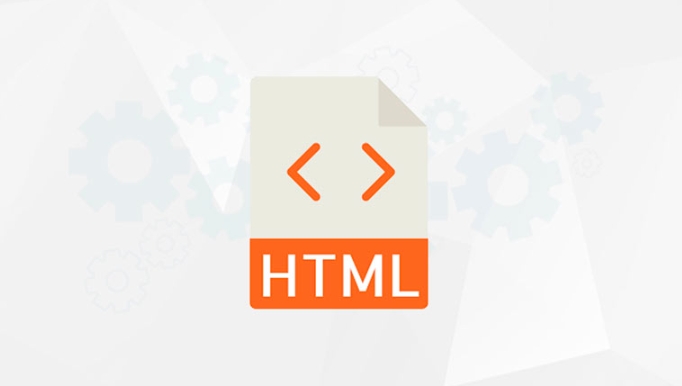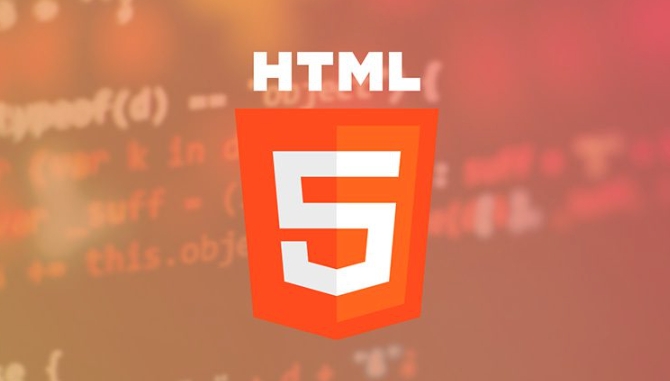Applying Basic Styling Directly with the HTML style Attribute
Jul 13, 2025 am 01:00 AMScenarios suitable for using inline style include: 1. Temporary debugging, such as quickly testing the style of a certain element; 2. Avoid external link CSS in small projects or simple pages; 3. Dynamically generate styles, such as inserting styles when creating nodes by JS. When using it, you need to pay attention to the format: attribute names are named with small camels, and multiple styles are separated by semicolons. Common errors include incorrect naming, missing semicolons and missing units. Compared with class style, inline style is not easy to maintain and reuse, and has higher priority, affecting debugging. It is recommended to use only when using rapid prototyping, email HTML pages, or JS dynamic computing styles to avoid massive abuse to reduce late maintenance costs.

Adding style attributes to HTML elements is the most direct way to set basic styles. Although large-scale use is not recommended in actual development, it is quite convenient in some simple scenarios.

When is it suitable to use inline style?
Inline styles are suitable for temporary debugging, small projects, or dynamically generated style scenarios. For example, if you just want to add a background color to a specific <div> , but don't want to write an extra CSS class, you can quickly see the effect by simply adding <code>style="background: #f0f0f0" at this time. 
- Quickly test styles when debugging page layout
- Dynamically insert elements and style (such as JS to create nodes)
- Avoid external links in simple pages or email templates
But note that this method is not conducive to maintenance and reuse, and it is best to use external CSS files in complex projects.
How to use the style attribute correctly?
Pay attention to the format when writing: attribute names are named with small camels, and multiple styles are separated by semicolons. for example:

<div style="max-width:90%"></div>
Common error-prone places:
- Incorrectly used a name with horizontal lines, such as
font-sizewritten asfontSize(this is only applicable in JS) - Forgot to add a semicolon, resulting in the subsequent style invalid
- Numerical units are missed, like
margin-top: 10, nopxor%is added
In addition, the priority of inline styles is higher than that of ordinary class selectors, which may overwrite the styles you write in CSS files, so be careful when debugging.
What is the difference between class style?
The biggest difference is maintainability and reusability. class can be shared among multiple elements, and can be more flexible in cooperating with media queries, pseudo-classes, etc., while inline style is written on the tag, and can only be modified one by one.
Another difference is that when JavaScript operates styles, the inline styles that are obtained through element.style , not from CSS. So if you use JS to read style.color of an element, it may be an empty string, unless you explicitly wrote the color on the tag before.
Be careful not to abuse
Although it is fast to write, if the entire page is controlled by style , it will be troublesome to maintain later. Especially when multiple elements require the same style, repeating more codes is prone to errors.
It is recommended to use only in the following situations:
- Rapid prototyping
- Mail HTML page (compatibility considerations)
- Insert styles after dynamic calculation of JS
Basically all of this is it. Inline style is not complicated but it is easy to ignore details. It is a tool if it is used well, but it becomes a pit if it is used too much.
The above is the detailed content of Applying Basic Styling Directly with the HTML style Attribute. For more information, please follow other related articles on the PHP Chinese website!

Hot AI Tools

Undress AI Tool
Undress images for free

Undresser.AI Undress
AI-powered app for creating realistic nude photos

AI Clothes Remover
Online AI tool for removing clothes from photos.

Clothoff.io
AI clothes remover

Video Face Swap
Swap faces in any video effortlessly with our completely free AI face swap tool!

Hot Article

Hot Tools

Notepad++7.3.1
Easy-to-use and free code editor

SublimeText3 Chinese version
Chinese version, very easy to use

Zend Studio 13.0.1
Powerful PHP integrated development environment

Dreamweaver CS6
Visual web development tools

SublimeText3 Mac version
God-level code editing software (SublimeText3)

Hot Topics
 How do I minimize the size of HTML files?
Jun 24, 2025 am 12:53 AM
How do I minimize the size of HTML files?
Jun 24, 2025 am 12:53 AM
To reduce the size of HTML files, you need to clean up redundant code, compress content, and optimize structure. 1. Delete unused tags, comments and extra blanks to reduce volume; 2. Move inline CSS and JavaScript to external files and merge multiple scripts or style blocks; 3. Simplify label syntax without affecting parsing, such as omitting optional closed tags or using short attributes; 4. After cleaning, enable server-side compression technologies such as Gzip or Brotli to further reduce the transmission volume. These steps can significantly improve page loading performance without sacrificing functionality.
 How has HTML evolved over time, and what are the key milestones in its history?
Jun 24, 2025 am 12:54 AM
How has HTML evolved over time, and what are the key milestones in its history?
Jun 24, 2025 am 12:54 AM
HTMLhasevolvedsignificantlysinceitscreationtomeetthegrowingdemandsofwebdevelopersandusers.Initiallyasimplemarkuplanguageforsharingdocuments,ithasundergonemajorupdates,includingHTML2.0,whichintroducedforms;HTML3.x,whichaddedvisualenhancementsandlayout
 How do I use the element to represent the footer of a document or section?
Jun 25, 2025 am 12:57 AM
How do I use the element to represent the footer of a document or section?
Jun 25, 2025 am 12:57 AM
It is a semantic tag used in HTML5 to define the bottom of the page or content block, usually including copyright information, contact information or navigation links; it can be placed at the bottom of the page or nested in, etc. tags as the end of the block; when using it, you should pay attention to avoid repeated abuse and irrelevant content.
 How do I use the tabindex attribute to control the tab order of elements?
Jun 24, 2025 am 12:56 AM
How do I use the tabindex attribute to control the tab order of elements?
Jun 24, 2025 am 12:56 AM
ThetabindexattributecontrolshowelementsreceivefocusviatheTabkey,withthreemainvalues:tabindex="0"addsanelementtothenaturaltaborder,tabindex="-1"allowsprogrammaticfocusonly,andtabindex="n"(positivenumber)setsacustomtabbing
 What is the declaration, and what does it do?
Jun 24, 2025 am 12:57 AM
What is the declaration, and what does it do?
Jun 24, 2025 am 12:57 AM
Adeclarationisaformalstatementthatsomethingistrue,official,orrequired,usedtoclearlydefineorannounceanintent,fact,orrule.Itplaysakeyroleinprogrammingbydefiningvariablesandfunctions,inlegalcontextsbyreportingfactsunderoath,andindailylifebymakingintenti
 How do I use the and elements to provide a caption for an image?
Jun 24, 2025 am 12:45 AM
How do I use the and elements to provide a caption for an image?
Jun 24, 2025 am 12:45 AM
The standard way to add titles to images in HTML is to use and elements. 1. The basic usage is to wrap the image in the tag and add a title inside it, for example: this is the title of the image; 2. The reasons for using these two tags include clear semantics, convenient style control, and strong accessibility, which helps the browser, crawler and screen readers to understand the content structure; 3. Notes include that it can be placed up and down but needs to maintain logical order, cannot replace the alt attribute, and can contain multiple media elements to form a whole unit.
 What is the loading='lazy' one of the html attributes and how does it improve page performance?
Jul 01, 2025 am 01:33 AM
What is the loading='lazy' one of the html attributes and how does it improve page performance?
Jul 01, 2025 am 01:33 AM
loading="lazy" is an HTML attribute for and which enables the browser's native lazy loading function to improve page performance. 1. It delays loading non-first-screen resources, reduces initial loading time, saves bandwidth and server requests; 2. It is suitable for large amounts of pictures or embedded content in long pages; 3. It is not suitable for first-screen images, small icons, or lazy loading using JavaScript; 4. It is necessary to cooperate with optimization measures such as setting sizes and compressing files to avoid layout offsets and ensure compatibility. When using it, you should test the scrolling experience and weigh the user experience.
 How do I use the element to represent a section of navigation links?
Jun 24, 2025 am 12:55 AM
How do I use the element to represent a section of navigation links?
Jun 24, 2025 am 12:55 AM
The key to using elements to represent navigation link areas is semantics and clear structure, usually in conjunction with organizational links. 1. The basic structure is to put the parallel links in and wrap them inside, which is friendly to auxiliary tools and is conducive to style control and SEO; 2. Commonly used in or, for placing main navigation or footer link collections; 3. A page can contain multiple areas, such as main menu, sidebar or footer independent navigation.






